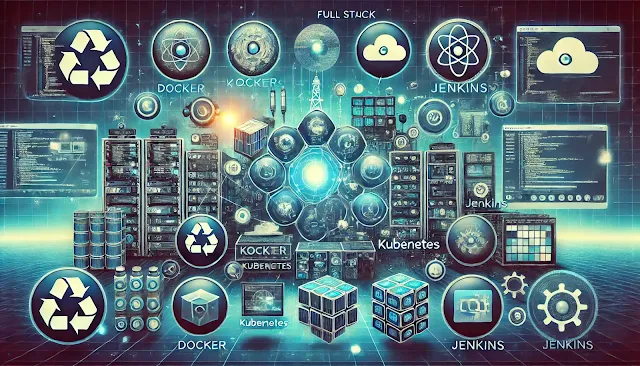Introduction
Full Stack Development involves managing the frontend and backend aspects of software development. This role requires proficiency across multiple technologies, understanding client and server-side programming, and managing database operations and application deployment. Here’s a detailed guide to essential tools and frameworks across the stack.
Frontend Development
Frontend developers create the visual components of a website that users interact with. Mastery in the following tools and frameworks is crucial:
1. Advanced CSS Techniques
- CSS Preprocessors: Sass, LESS - simplify and enhance CSS coding with variables, mixins, and nested syntax.
- Frameworks: Bootstrap, Tailwind CSS - speed up responsive design with ready-to-use components.
2. JavaScript Ecosystem
- Libraries: React.js, Angular, Vue.js - popular for their powerful ecosystems and community support. React.js uses a virtual DOM to enhance performance, Angular offers a comprehensive framework with a robust structure, and Vue.js is loved for its simplicity and progressive nature.
- State Management: Redux for React, Vuex for Vue - manage state in complex applications effectively.
3. TypeScript
- Purpose: Introduce static type checking to JavaScript, reducing runtime errors and enhancing code quality.
- Integration: Works well with React, Angular, and Vue, improving scalability and maintainability.
Backend Development
Backend development focuses on the server side, dealing with databases, server logic, and application integration.
4. Node.js
- Frameworks: Express.js is minimal and flexible, providing a robust set of features for web and mobile applications. Koa and Hapi are other notable frameworks that offer more modern, promise-based patterns.
- Tools: PM2 for process management, nodemon for automatic server restarts on code changes.
5. Python
- Django: Offers an ORM to abstract database operations, built-in security features, and a templating system. Suitable for applications requiring robust database management and data analysis.
- Flask: More suitable for microservices and smaller applications due to its lightweight and modular design.
6. Database Management
- Relational Databases: PostgreSQL offers advanced features and robustness for complex queries and data integrity.
- NoSQL: MongoDB for schema-less data storage, providing flexibility in handling data formats.
DevOps and Version Control
Essential for managing code versions, automating builds, and maintaining deployment pipelines.
7. Containerization and Orchestration
- Kubernetes: Automates container operations, providing scalability and fault tolerance.
- Docker: Simplifies dependencies management and streamlines application development and testing.
8. Continuous Integration/Continuous Deployment (CI/CD)
- Tools: Travis CI, Jenkins, GitLab CI - automate testing and deployment, ensuring high code quality and speeding up the delivery process.
Testing and Performance Optimization
Testing is critical for ensuring the reliability and performance of applications.
9. Unit and Integration Testing
- Tools: Jest for JavaScript, pytest for Python - support TDD and BDD methodologies.
- End-to-End Testing: Cypress, Selenium - simulate real user scenarios, verifying application flows from start to finish.
10. Performance Testing
- Tools: Apache JMeter, Gatling - simulate various environments to test how applications perform under stress and load conditions.
Conclusion
Becoming a full stack developer involves a continuous learning curve where developers must keep up with new tools and technologies. Hands-on experience through projects and constant learning are key to mastering full stack development.
Further Learning Resources
- Podcasts and Blogs: CodeNewbie, Syntax.fm, and Full Stack Radio to stay updated with the latest trends.
- Community and Mentorship: Engage with communities on Reddit, Dev.to, and local meetups for real-time advice and networking.






0 Comments